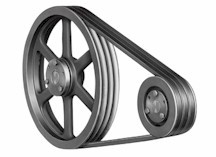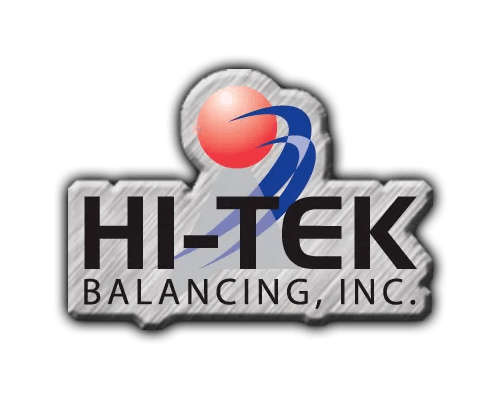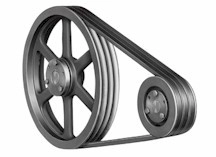Over-sizing the drive system when selecting and replacing worn v-belt drives is one simple, commonly-made mistake that actually causes premature wear on every component in a rotating system.
How can this be? Aren’t more belts always better? Not always with v-belt drive systems.

With the high cost of parts, labor and downtime, sizing belt drives correctly will save in many ways. If you are responsible for keeping your HVAC systems up and running, it’s important to understand why bigger is not always better.
Here’s a typical situation that occurs with many belt-drive systems:
The system:
- Return air fan unit
- 5 hp, 1750 rpm motor
- 1250 rpm fan wheel speed
- Motor drive sheave, 5-inch diameter dual “B” belt
- Fan shaft driven sheave, 7-inch diameter dual “B” belt
The Problem:
- Belts wear out annually and sheaves last only 3 years
- Difficult -to-tension belts due to flexible structure
The Solution:
I asked the maintenance manager if the drive arrangement used was as the OEM supplied it. The answer was “no” — he increased the belt section to “B” from the “A” that was originally supplied so he could get better drive-belt life. In reality, he did just the opposite.
According to Browning grip-belt engineering data, the horsepower capacity per belt using “B” belts is about 11.5. This means the drive is capable of 23 horsepower. If “A” section belts were selected, the horsepower per belt is 7.5, for a total capacity of 15 hp.
Both situations provide more than enough capacity. The problem is the larger the drive capacity requires more belt tension to prevent slipping. The best situation would be to use a single groove “B” belt. Even one “A” belt would be enough if the diameter of both sheaves were increased.
This provides plenty of service factor and reduces the acquisition cost of the parts. The belt tension requirements are less, and the structure is more capable of maintaining the needed tension. Added capacity often means added wear and expense – proper belt-size and tension reduces noise, slip, wear, and vibration from flapping.
6VAMJRKD6A2V



